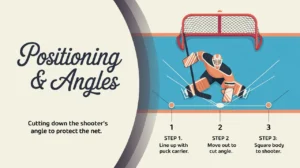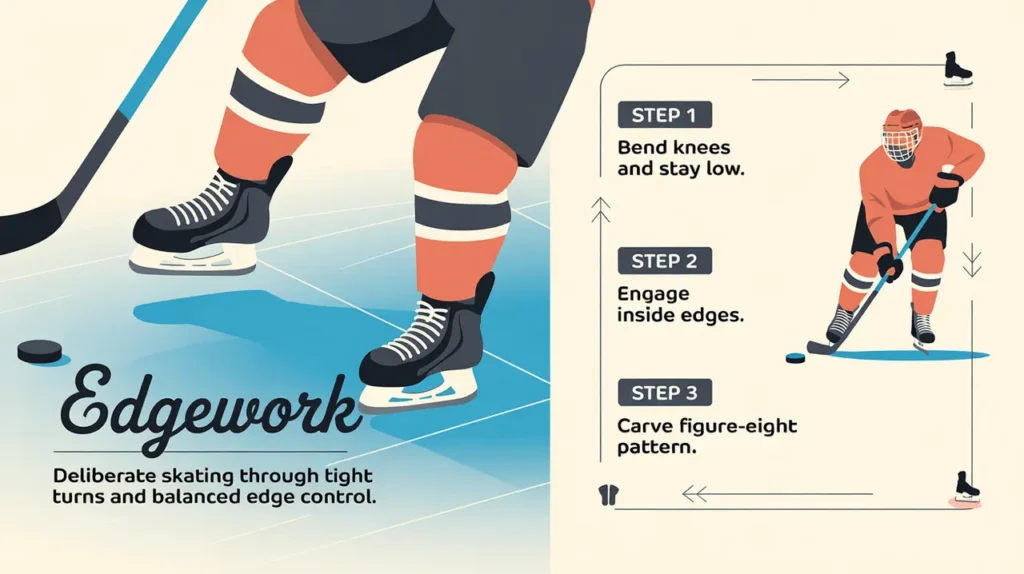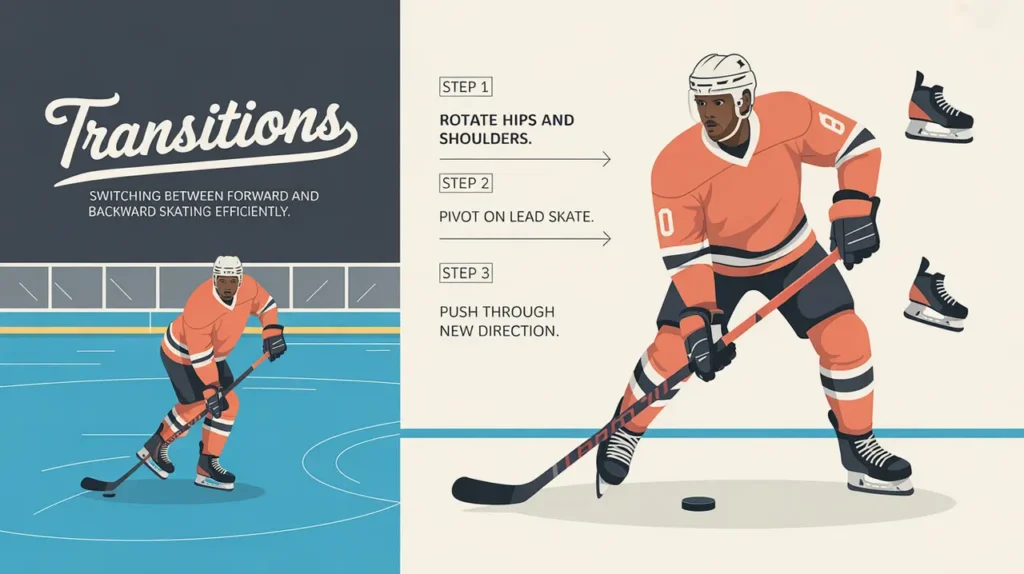Jim’s Intro to Crossovers
Hi folks, Jim here, the only commentator who once tried to show off crossovers during intermission by driving a Subaru onto the ice.
What are crossovers?
Crossovers are the technique of crossing one skate over the other while skating on a curve. They allow players to generate speed, maintain balance, and change direction fluidly without losing momentum. Crossovers are essential for cornering, circling, and building acceleration on turns.
How does it work?
Crossovers rely on precise edge work, coordinated movement, and controlled weight shifts:
- Athletic Stance: Knees bent, chest up, and weight centered over the skates.
- Outside Foot Push: The outside leg drives powerfully, initiating the crossover.
- Inside Foot Cross: The inside leg crosses over, landing firmly on the outside edge to continue the curve.
- Edge Control: Both inside and outside edges work together to carve the turn.
- Upper Body Alignment: Shoulders and hips follow the curve smoothly without twisting awkwardly.
- Continuous Rhythm: Repeated crossovers build speed through the turn like a tightening coil.
How do you make good decisions with it?
- Choose Smart Lines: Use crossovers to adjust your route efficiently rather than drifting wide.
- Control Your Speed: Crossovers aren’t just for going faster. They’re for maintaining balance in tight spaces.
- Match the Play: Time your crossovers with puck movement to stay in position.
- Use Both Directions: Strong players can crossover equally well both clockwise and counterclockwise.
- Blend with Other Skills: Combine crossovers with puck handling or quick transitions for game situations.
How do you master it?
Mastering crossovers takes repetition, edge drills, and balance work. Start slowly, focusing on clean edge usage and posture, then build speed. Figure-eight patterns, circles, and resistance drills develop rhythm and power. Practicing both directions equally prevents imbalance in game play.
What does it look like when done right?
Elite crossovers look fluid, powerful, and almost effortless. The skater gains speed through turns, maintains tight control, and exits the curve ready to accelerate or change direction again without hesitation.
Commentator’s Corner
Jim’s Take
The best skaters don’t just turn. They glide through corners like they’re on invisible tracks. Crossovers are their secret fuel.
Parent Tip
Look for balanced crossover development in both directions. Favoring one side can limit a player’s mobility later on.
Player Tip
Focus on clean edges and posture before chasing speed. Power comes from precision first.
A Final Thought
Crossovers turn corners into launch pads. Master them, and you’ll control speed and direction with the confidence of a seasoned pro.









